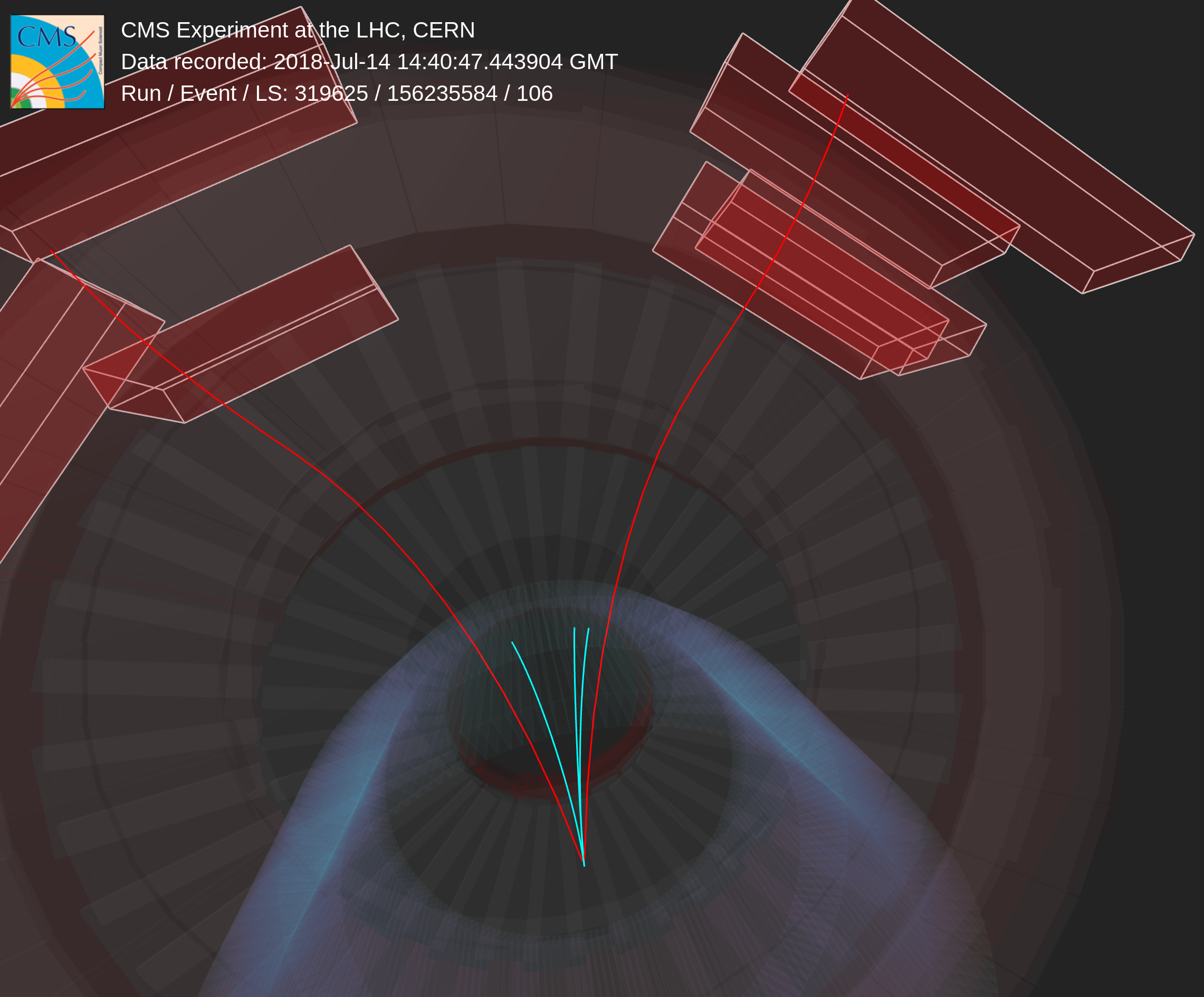
Recent observations from experiments worldwide have reported anomalies in the decays of a bottom quark to a charm quark, a charged lepton (electron, muon, or tau), and the corresponding neutrino. These observations hint at possible deviations from the standard model (SM) predictions and suggest new physics. The anomalies, indicating a possible breaking of “lepton flavor universality”, indicate that the rates of transitions involving different types of leptons might not be as universal as the SM predicts. To explore these intriguing observations further, in this analysis, carried out at the CMS experiment, we focused on decays of the rare Bc meson – a particle composed of a charm and a bottom quark.
We detect decays of the Bc meson into a J/ψ particle, composed of a charm quark and its antiparticle, a tau lepton and a neutrino (Bc → J/ψτν), as shown in Fig. 1, and compare them to Bc decays into a J/ψ particle, a muon and a neutrino (Bc → J/ψμν). The ratio, known as R(J/ψ), is sensitive to new physics effects that might lead to a difference in the decay rates.

Figure 1: Event recorded by the CMS experiment at a center-of-mass energy of 13 TeV, wherein a Bc meson candidate decays into a J/ψ meson and a tau lepton. The J/ψ meson further decays to two muons, shown with red lines, and the tau lepton decays to three charged pions, shown as blue lines.
In the data analysis, J/ψ mesons are reconstructed and the decay products of the tau lepton are identified. The CMS detector's precision and ability to handle vast amounts of collision data are crucial for this measurement. By comparing the rates of Bc meson decays involving taus and muons, we aim to shed light on the lepton flavor universality anomalies, providing new insights into these intriguing phenomena and guiding theoretical physicists in refining their models.
The various measurements in this channel are summarized in Figure 2. In our previous result obtained from events in which the tau decays into a muon lepton, we measured a value of R(J/ψ) that is fully consistent with the prediction of the SM. In the new measurement, exploiting the tau hadronic decay, we obtain a value for the rate ratio that is somewhat higher than expected, but not inconsistent given the uncertainty. In combination, the CMS measurements are still in agreement with the SM expectation.
Figure 2: Summary of previous measurements of R(J/ψ) by the LHCb and CMS experiments, compared with the result from this analysis and their combination. The total uncertainties are indicated by the horizontal lines. The SM value is shown as a vertical red line.
"The CMS detector's design and capabilities make it an invaluable tool for exploring the fundamental laws of nature", remark CMS researchers Camilla Galloni, from the University of Wisconsin-Madison, Stefanos Leontsinis, from the University of Zurich, and Yuta Takahashi, from the University of Florida, who worked on the data analysis leading to this result. As we continue to analyze rare decays and investigate potential new physics, each measurement brings us closer to understanding the underlying principles of the universe. The study of Bc meson decays at CMS is a significant step in this ongoing journey to discovery.
Read more about these results:
-
CMS Physics Analysis Summary (BPH-23-001): "Measurement of the ratio of the B+c→J/ψτ+ντ and B+c→J/ψμ+νμ branching fractions using three-prong τ lepton decays in proton-proton collisions at √s= 13 TeV"
-
Display of collision events: CERN CDS
-
@CMSExperiment on social media: LinkedIn - facebook - twitter - instagram
- Do you like these briefings and want to get an email notification when there is a new one? Subscribe here

